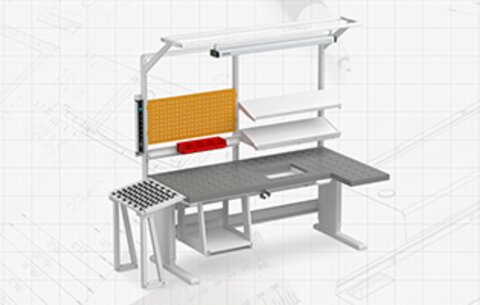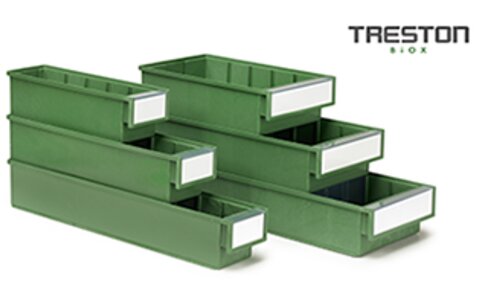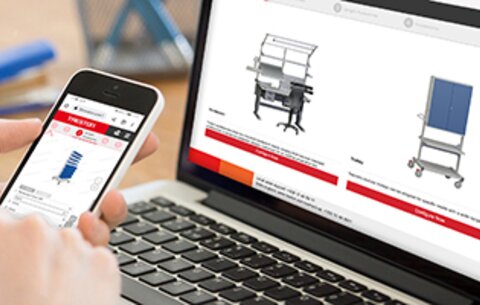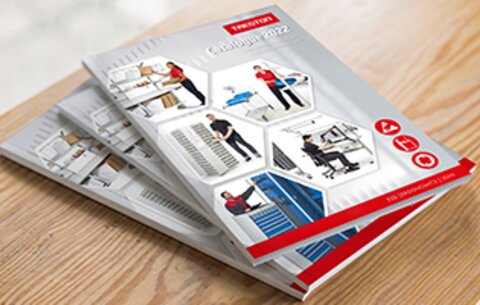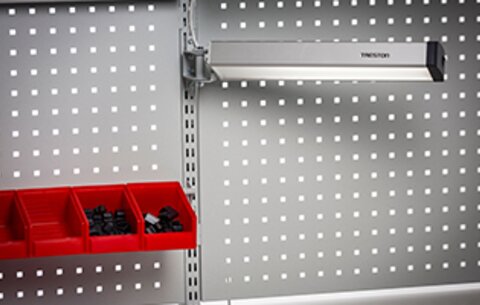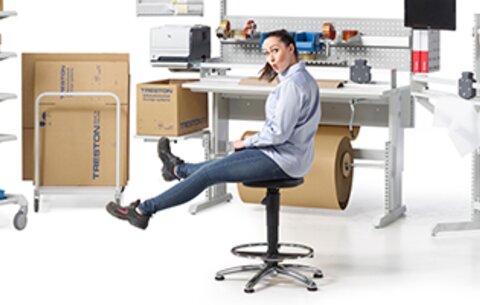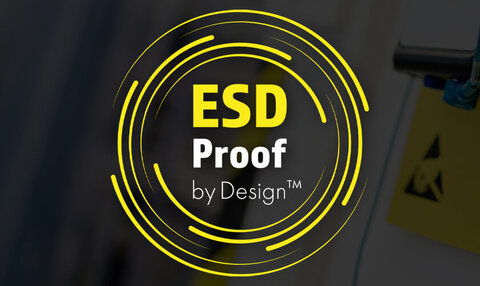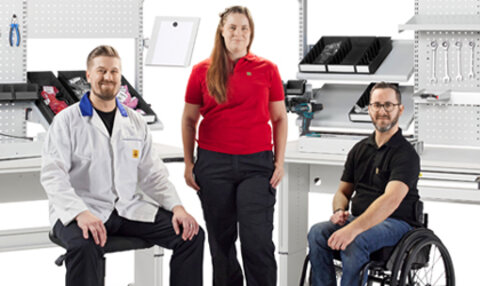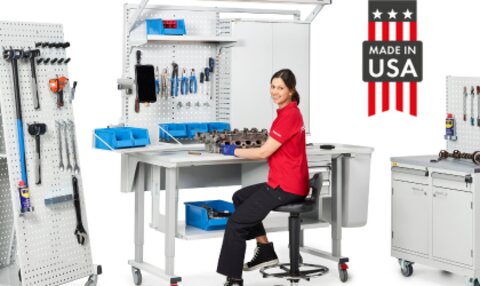

10 Helpful Hints in Laboratory Design
Ten Tips for Improving Laboratory Design
Having a smart workspace that is adaptive to your specific work needs is critical to your success. Here are some of our top laboratory recommendations; you can find many of these resources for sale and available to you in our product catalogs here.
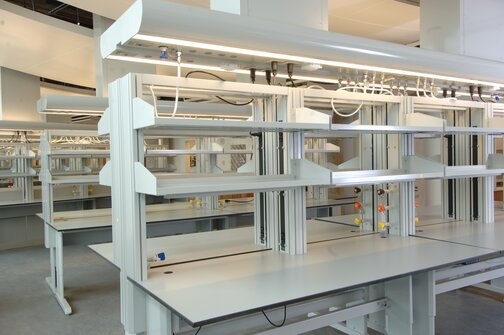
Using a light color work surface such as white, off-white, or light gray helps lift the brightness of any room. This facilitates the use of less electrical lighting. Thus, providing efficient light candles through reflection without the added electrical expense.
The use of stainless steel sinks to dissipate dry ice is of extreme importance, especially when surrounded by epoxy resin work surfaces. Epoxy resin sinks will crack under extreme temperature changes. Polypropylene sinks are an option as well. One stainless steel sink per lab module should be designated as a station for dry ice dissipation.
Electric motor tables are recommended as opposed to hydraulic tables. There are several reasons to include motor tables in the design. First, the table is height adjustable. ADA can be addressed with the unit. Second, I recommend one motor table per lab module. The rest of the lab can be economically furnished with manually height-adjustable tables that can be lifted with the motor table and adjusted singlehandedly. If a motor table is not used, several people or a different lift can be used. Third, the ergonomic aspect of the workstation is addressed. The user can adjust the table from sitting height to standing height at the push of a button. It is important to never introduce hydraulic fluid into a critical or even semi-critical environment. The presence of hydraulic fluid creates an unnecessary risk of a potential leak.
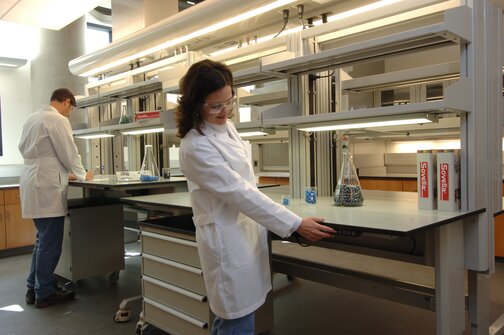
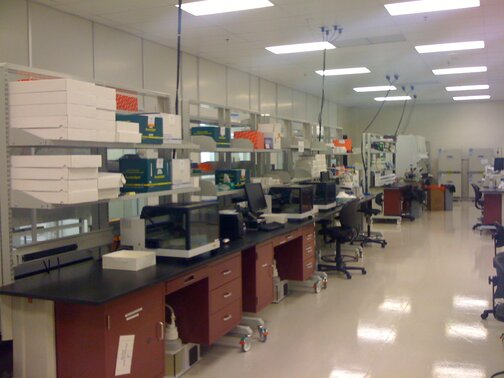
Seamless epoxy flooring is recommended due to its chemical resistance and cleanability. Many times, casework can be set in place and the flooring poured to the base of the casework. This can be a cost-cutting method, as setting the casework on an unfinished floor saves on material and labor costs.
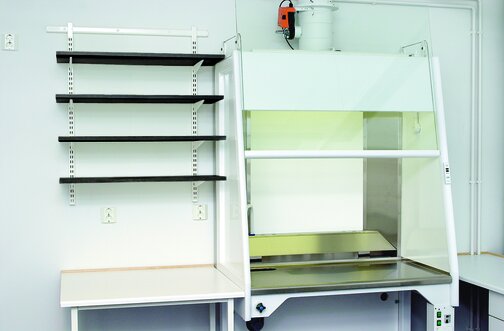
Fume hoods should always be set at least six feet away from any doorway. High-traffic areas should also be avoided because of airflow interference. This is especially important with the advent of low-flow fume hoods.
Fume hood work surfaces should be constructed of a durable, chemical resistant, self-extinguishing material. I recommend epoxy resin that has been molded so that the dished area of the surface meets at the bottom of the sides and back panel of the hood interior walls.
Ceiling mounted service panels can be used to house quick-disconnect fixtures for electrical, gas, vacuum, compressed air, water, data, etc. This configuration promotes flexibility and modularity should a change in configuration be desired. It should be noted that at least one of the electrical outlets should be devoted to an emergency electrical source such as a generator.
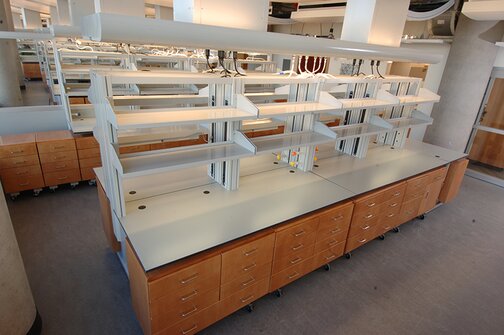
Modular, moveable workstations that house fixtures with quick-disconnects to the ceiling panels as stated above, provide excellent utility. Labs can be reconfigured as needed with these units. Also, when units are not connected to the wall or floor, they may be taken to the next site because they are not considered permanent fixtures. This is perfect for any incubator-type lab which might move to a larger space.
Work surfaces such as epoxy resin, phenolic resin, and stainless steel have come to the forefront of preferred materials. Epoxy resin is recommended where harsh chemicals are in use or where extreme heat exists. Phenolic resin is recommended where instrumentation is in use or where water is the predominant liquid present. Also, if moveable workstations are used, phenolic resin is lighter in weight than epoxy resin and cuts the load capacity. Stainless steel is recommended where cleanability (disinfectants) is of utmost importance.
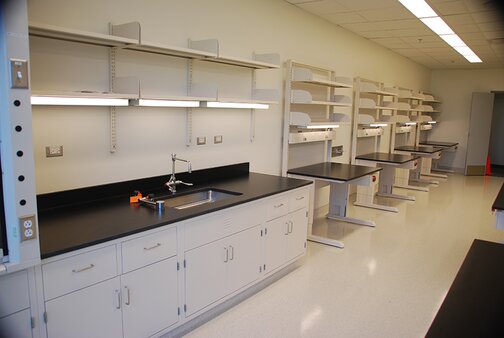
Safety is very important in any lab. Wall mounts for warning signs and spill treatments should be posted in each lab module. I recommend a hand-held eyewash mounted on a hose so that it may be used as a hand-held shower nozzle as well. This eyewash should be mounted at every sink. Also, I recommend a recessed safety station located between lab modules. This station is recessed into the wall yet provides a deluge shower and eyewash station while saving precious square footage in the lab.
Order Products to Enhance Your Laboratory from Treston
Every mentioned laboratory suggestion above has its advantages, but the ultimate decision will depend on the needs of your specific lab. For more information on selecting the best options for your lab, please contact a Treston representative! Or, begin designing your workspace online with our 3D website tool.

